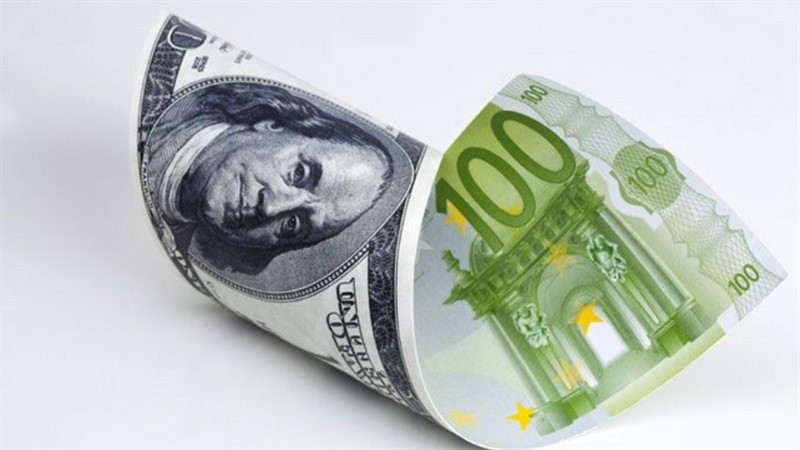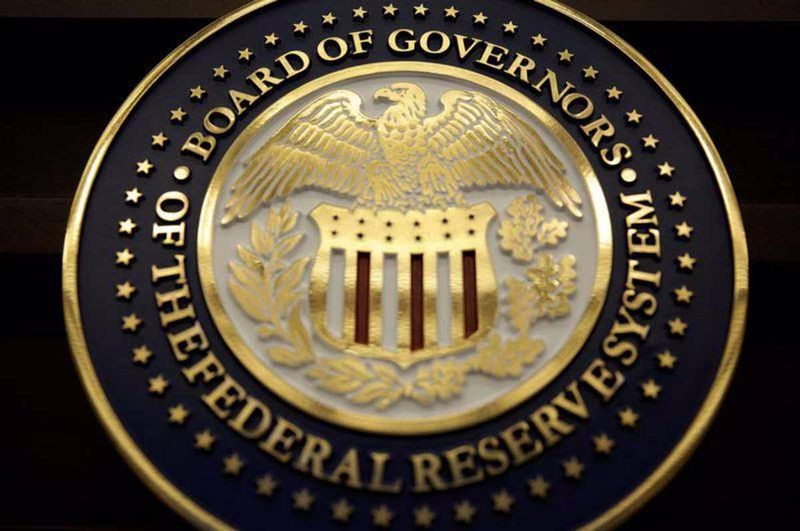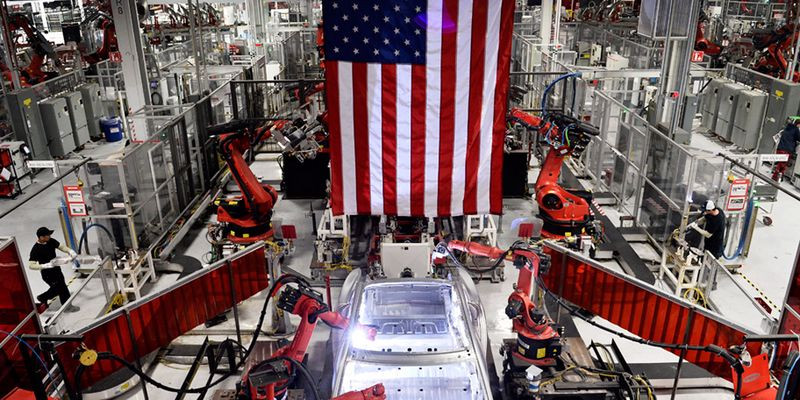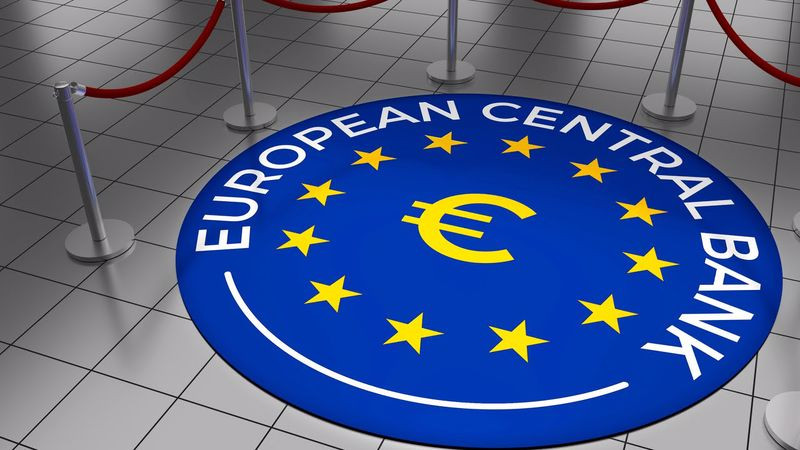
In a relatively short period of time, the balance of power in the leading central banks has shifted towards the hawks, foreshadowing the biggest wave of monetary policy tightening in recent years.
Money markets now estimate a 33% chance of the Fed raising the key rate by 50 points at once in March, leaving a 67% chance of a 25 basis point increase. But just a month ago, futures for the federal funds rate put in quotes a 24% probability that the rate would not be raised in March.
ECB representatives have clearly warmed to a rate hike this year and even twice, although they rejected this idea back in December.
"Central banks cannot ignore the price pressures that have already attracted such close public attention," UBS strategists said.
Of course, the early actions of central banks are not useless.
Quick steps can prevent high inflation from taking hold if companies whose wage decisions affect future price fluctuations believe that central banks will not tolerate deviations from their target.
At the same time, monetary policy cannot do anything about world commodity prices, such as oil, which are the main factors of inflation.
"If we do not achieve a reduction in energy prices, this may become the cherry on the inflation cake," analysts at Pictet Wealth Management said.

According to some estimates, a 10% increase in oil prices increases inflation in the eurozone by about 0.5%.
As for the United States, the rise in the price of oil to $100 per barrel could add 0.4% to the PCE inflation rate by the end of 2022.
In addition, the rapid retreat of the doves in the face of sky-high inflation increases the risk of political error, since economic conditions do not change as quickly as political sentiment.
"The ECB's doves seem to have thrown in the towel. However, the risk that this will end with another "Trichet moment" is not zero," Bank of America analysts said, referring to the ECB rate hike in 2011. Then the central bank took this step to mitigate a small jump in inflation on the eve of the debt crisis of the currency bloc, which was perhaps the biggest political mistake in the history of the financial institution.
There are concerns that the beginning of a cycle of interest rate hikes and the highest inflation in 40 years in the United States are likely to contribute to the onset of stagflation rather than continued economic growth.
Leading investment banks have already lowered their forecasts for US GDP for the first quarter. Thus, JPMorgan expects an annualized growth rate of 1.5%, Bank of America – by 1.0%, and The Goldman Sachs - by only 0.5%.
The decline in economic activity in the country puts the Fed at an extreme disadvantage.
"We still believe that the slowdown in US GDP growth in the first quarter will convince FOMC officials to start slowly, although they may predict more cumulative tightening over the next few years," Capital Economics analysts said.

Fed officials are trying to convince the market that a 50 basis point rate hike is not worth waiting for.
In particular, the head of the Philadelphia Fed, Patrick Harker, does not see the need for such a step. He said that such an aggressive tightening would require a fairly significant jump in inflation compared to current levels.
The president of the Federal Reserve Bank of San Francisco, Mary Daly, announced that she would support the March increase by a quarter point, but the next steps will depend on the incoming data. She advocates a gradual tightening of policy that will not undermine the US economy.
The head of the Atlanta Fed, Rafael Bostic, in turn, hastened to refuse to comment on a possible rate hike by half a point, explaining that this is not the preferred scenario for the next meeting. He said he still expects three rounds of a quarter-point rate hike this year.
Even James Bullard, president of the St. Louis Fed and one of the most ardent supporters of an earlier and faster tightening of the Fed's policy, doubted the expediency of such a step.
"At the moment, it is unclear what you are buying with a 50 basis point increase. In a sense, we have already done a lot of work, and I am not sure that we should sharply raise the federal funds rate in March," he said.
These doubts provoked a correction of the USD index by 2.3% from the 1.5-year peak recorded at the end of last month at 97.44 points.
However, the January data may force the FOMC to change its position.
The report on US employment released at the end of last week allowed the greenback to find a local "low" in the area of 95.20 points and break a five-day streak of failures on Friday.

An unexpectedly sharp increase in the number of jobs in the United States occurred despite the spread of a new strain of the coronavirus "Omicron". Some experts did not rule out the possibility that even a reduction in this indicator could occur in January.
According to the US Department of Labor, last month the number of people employed in the non-agricultural sector of the country increased by 467,000, exceeding market expectations of 150,000, and the figure for December was revised to 510,000 from 199,000. More importantly, annual wage growth accelerated to 5.7% from 5%, fueling fears of an inflationary spiral.
The strong employment report reinforces the Fed's argument that the economy is strong enough to withstand tighter monetary policy this year.
"Strong hiring in January completely changes the perception of the labor market and the U.S. economy as a whole," Jefferies strategists noted.
"What looked like a summer surge, followed by winter frosts, now looks like a very steady growth momentum that is not weakening at all. This may signal that the Fed may need to continue the tightening cycle in 2023 and even 2024 to contain inflation," they added.
According to Larry Summers, the former US Treasury secretary, raising rates by a quarter point will not help.
"I think that the longer the Fed delays in developing a clear and strong response to inflation, the more expensive it will ultimately be to get rid of the system. As practice shows, a significant reduction in inflation requires an increase in the rate by several hundred basis points (several percentage points)," he said.
If in the coming weeks the Fed signals its readiness to raise the rate by 50 points in mid-March, this will become the basis for strengthening long positions on the US currency, and in February the USD index may rewrite January highs near 97.50.
The greenback cheered up after the release of strong employment data in the US and remained stable against its main competitors, including the euro, on Monday.
The US currency tried to develop Friday's rebound, but faced resistance around 95.60.
On the other hand, a net breakdown of this month's low at 95.17 (from February 4) will push the bears to aim for a low of 2022 at 94.62 (from January 14).
The EUR/USD pair started the new week under little pressure after it staged a rally of more than 300 points last week in response to the ECB's hawkish statements, which forced the market to move the likely timing of a rate hike in the eurozone.

Over the weekend, a member of the ECB's Governing Council, Klass Knot, announced that he expects the first rate hike in the last quarter of this year.
Meanwhile, his colleague Martins Kazaks said that with the economic recovery, inflation at the current level and an increased risk of consumer price stability, the need for new asset purchases is becoming less strong.
At the same time, he refrained from mentioning a specific month in which the rate may be increased, saying only that July is still too early.
Monday's economic calendar is not eventful, and the EUR/USD pair cannot clearly determine the further direction of movement today.
One of the main releases of this week will be the report on US inflation for January, which may affect the dollar against the euro. Experts predict an acceleration of annual inflation in January to 7.3% after 7% a month earlier.
Until the markets get this indicator, investors will simply try to guess whether the trajectory of future Fed rates, which they put in quotes, is correct.
The initial support for EUR/USD is at 1.1400. A breakdown of this mark will open the way for the bears to 1.1350, and then to 1.1320.
The nearest resistance is located at 1.1480, followed by 1.1500 and 1.1550.





















